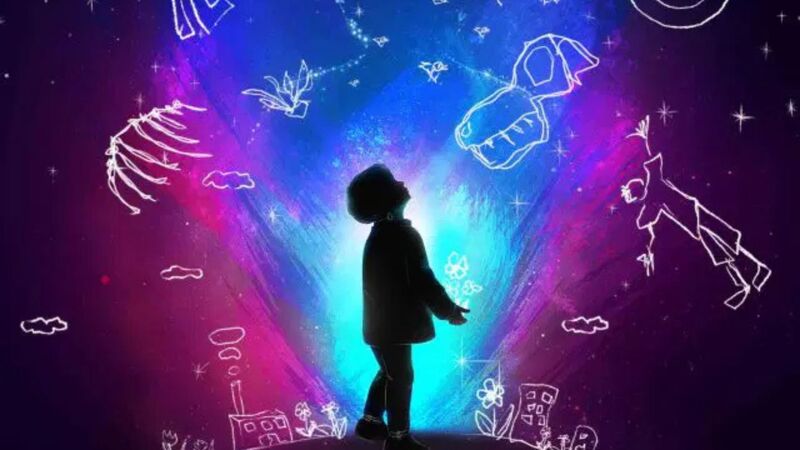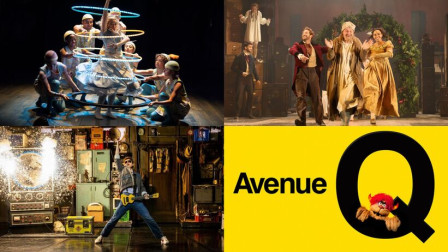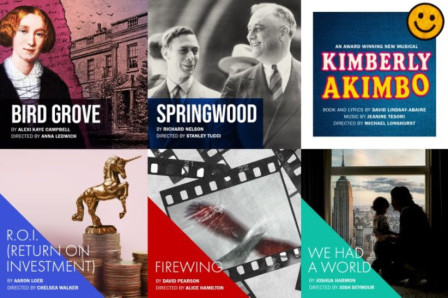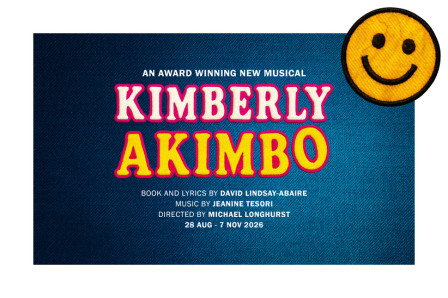Interview with OUR COSMIC DUST's Michinari Ozawa
 Shehrazade Zafar-Arif
21 May, 2025, 13:06
Shehrazade Zafar-Arif
21 May, 2025, 13:06
Making its English language debut at the Park Theatre, Our Cosmic Dust is a poignant story about loss and hope, blending storytelling with puppetry and LED technology to create a truly unique theatrical experience. London Box Office sits down with its creator Michinari Ozawa, Tokyo writer and director, to talk about what inspired the play, the process of translating it from Japanese to English, and the role of imagination in bringing this show to life.
 Artwork for Our Cosmic Dust at Park Theatre.
Artwork for Our Cosmic Dust at Park Theatre.
For those unfamiliar with the show, could you start by telling us what Our Cosmic Dust is about?
A schoolboy, who has recently lost his father, decides to set out on a journey. Our Cosmic Dust revolves around the question: "where do people go when they die?". On realising that the boy has suddenly left home, his mother runs to find him. As she traces her son’s steps, she encounters townspeople who have met him along the way. On each encounter, each character begins to formulate their own answers to the question "where do people go when they die?". This is a story about those who have lost someone very dear to them.
What was the inspiration for this play?
It all started when I thought about what show I could create by combining LED display technology with puppetry. Combining these two polar opposite forms seemed like a journey delving into the unknown. And the question of "where do people go when they die?” also requires delving into the unknown. I wanted to take on this play precisely due to my excitement of facing the unknown.
What made you decide to tell the story through the perspective of a child?
I think children hold a richer imagination than adults. On the death of his father, Shotaro is forced to face the unknown of "death." How can he come to terms with his new reality? How can he find answers? By telling this story through the eyes of a child, I believe adults might find a way to move forward when facing the loss of a loved one.
How was the experience of translating the show from Japanese into English? Did you ever worry that any crucial elements might be lost in translation?
At first, I felt perplexed by the cultural and linguistic differences. But when I noticed everyone laughing and feeling moved during our initial script workshop, I realized that actually anyone in the world can have a similar emotional response to a story.
This is my first Anglo-Japanese project. While understanding the common emotions and cultural differences, our translator Susan Momoko Hingley has added her own spice to my work. So I have no worries at all. And I find myself surrounded by so many talented creatives in the rehearsal room who have each found their own way to add to this story. I am enjoying every day working with such a brilliant team.
What was it like working with the show’s incredible visual effects? What do they bring to the story, especially one with a child as the protagonist?
Why are we using visual effects? Why are we using puppetry? I have kept these questions in my mind whilst making this show. For example, a puppet cannot move unless touched by someone. In the same way, an image only appears on our screen when someone’s imagination is ignited or they feel moved. By valuing things that can only be moved by the action of a person, I believe the imagination of the audience will be moved too.
What do you hope audiences take away from the play?
Rather than asking what I want the audience to take away from it, I'm looking forward to finding out how the audience will perceive this show. People who come from different backgrounds, who eat different foods and who carry various sensitivities and emotions have gathered to make the UK version of Our Cosmic Dust.
In the same way, I imagine that our audience members will each have their own sensitivities, emotions, and ways of thinking. I am really looking forward to finding out how each audience member will experience and react to this play.
What’s your favourite part of the show and what are you most excited for audiences to experience?
My favourite part is that, even though our LED screen can display full colour, we have chosen to mainly use a black and white palette. This reflects the intention of the story, which delves into the feeling of loss of a loved one. But I also believe that by reducing the palette of colours, our audience's imagination will be moved more vividly. Since we do not spoon-feed every detail to the audience but leave space for their imagination, I believe our audience will relate what they see to their personal experiences. In turn they will start to imagine their own colours in the space. I'm excited to find out how the audience imagines through his show.
Finally, what would you say to encourage people to come watch Our Cosmic Dust?
We have placed a huge LED screen on the Park200 stage. In contrast, when our small puppet comes to life, stories are revealed of each character who has been moved by meeting him. I hope we are able to ignite the audience’s imagination in a universally infinite way. I feel confident about transposing a story that was born in Japan into this brand-new Anglo-Japanese production.
Although this is a story that depicts the course of death, it is also a story about the hope of those who are left behind.
Please do come and experience this story for yourself.
Our Cosmic Dust plays at Park Theatre from 2 June - 5 July 2025.
Latest News

 This Month in the West End (November 2025)
28 November 2025 at 14:17
This Month in the West End (November 2025)
28 November 2025 at 14:17

 Channing Tatum's MAGIC MIKE LIVE extends to 2027
28 November 2025 at 14:02
Channing Tatum's MAGIC MIKE LIVE extends to 2027
28 November 2025 at 14:02

 Hampstead Theatre reveals plans for 2026
28 November 2025 at 13:33
Hampstead Theatre reveals plans for 2026
28 November 2025 at 13:33

 KIMBERLY AKIMBO announces UK premiere in 2026
28 November 2025 at 09:40
KIMBERLY AKIMBO announces UK premiere in 2026
28 November 2025 at 09:40